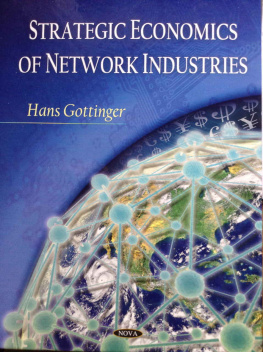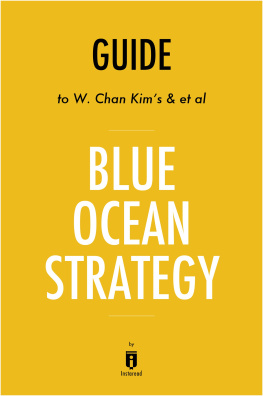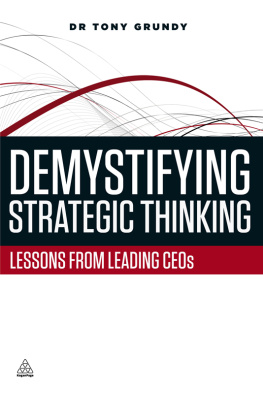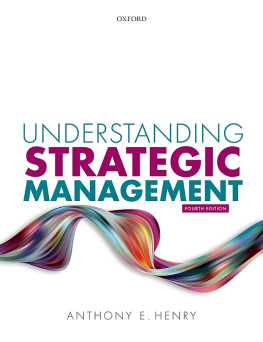*-)+%".*#/)'+01!"#'%!)*-)+%".*#/)'+01!"#'%!)
2$+!)&*""'+&%#
Nova Science Publishers, Inc .
NewYork Copyright 2009 by Nova Science Publishers, Inc.
A ll rights reserved . No part of this book may be reproduced, stored in a retrieval system ortransmitted in any form or by any means: electronic, electrostatic, magnetic, tape, mechanicalphotocopying, recording or otherwise without the written permission of the Publisher.
For permission to use material from this book please contact us:Telephone 631-231-7269; Fax 631-231-8175
Web Site: http://www.novapublishers.com
N O T I C E T O T H E R E A D E R
The Publisher has taken reasonable care in the preparation of this book, but makes no expressed or implied warranty of any kind and assumes no responsibility for any errors or omissions. No liability is assumed for incidental or consequential damages in connection with or arising out ofinformationcontained in this book. ThePublishershall not be liable for anyspecial, !"#$%&'%#()*+,-".-%/%01+*.2-3*0*4%$-.%$'+()#4,-)#-56"+%-".-)#-1*.(,-7."0- (6%-.%*3%.$8-'$%-"7,-".reliance upon, this material.
Independent verification should be sought for any data, advice or recommendations contained in this book. In addition, no responsibility is assumed by the publisher for any injury and/or damage to persons or property arising from any methods, products, instructions, ideas or otherwisecontained in this publication.
This publication is designed to provide accurate and authoritative information with regard to thesubject matter covered herein. It is sold with the clear understanding that the Publisher is notengaged in rendering legal or any other professional services. If legal or any other expert assistance is required,theservices of a competent person should be sought. FROM ADECLARATION OF PARTICIPANTS JOINTLY ADOPTED BY A COMMITTEE OF THE AMERICAN BAR ASSOCIATION AND A COMMITTEE OF PUBLISHERS.
LI B R A R Y O F C O N G R ESS C A T A L O G I N G-I N-PU B L I C A T I O N DA T A
ISBN: 978-1-60741-345-5
PublshedbyNovaSciencePublishers,Inc.!NewYorkC O N T E N TS
3456785))))9::$8;<=>?5@AB5)))G(H7IC54)G)High Speed Technology Competition (HSTC))))JK(H7IC54)J)Vertical Competition and Outsourcing in a Supply Chain)LM(H7IC54)N)Supply-Chain Co-Opetition)))ON(H7IC54)L)Cooperative R&D, Collusion and High Tech Competition) )PK
(H7IC54)K)Technological Competition and R&D Cooperation
with Product Differentiation
)))GQK(H7IC54)O)Innovation and Competition in Network Markets)))GJK(H7IC54)M)Network Economies for Open Source Technologies (OST)) )GLK(H7IC54)P)Competition in Increasing Returns and Network Industries))GOK(H7IC54)R)Network Economies for the Internet)))GPK'<@5E))))JGG
PR E FA C E
Network economies on different aggregate levels play an important role in policy guidance and management of large interconnected systems. They consist of systemic partsthat relate to competitive and cooperative interactions reinforced by technology drivencharacteristics.
This text should be of interest to policy makers , industry consultants and students ofindustrial economics and management alike who feel attracted and pay attention to strategicand structural elements of network economies. The book is also designd as a text for a coursein business strategy as supplementary to industrial organization. In contrast to strategy textsthat tend to do comprehensive covering of descriptive material we identify and focus onspecific issues that offer analytical insights and have direct relevance in industry analysis.
The selection of the material springs from academic and consultancy work in ICT related network industries . Some of the industry-specific observations, insights and experiencesderive from my economicconsultancy work withSTRATEC,Germany (http://strateccon.com). The central theme is the interplay of competition and cooperation along verticaland horizontal industry lines This forms the core base of business strategy relating to the growth of business and complementary activities through innovation, mergers and related strategic choices.
Another feature of this approach is to link strategic considerations to the particular issuesconcerned rather than to come up with a grand , comprehensive, fully integrated plan whichfails to adapt to specific firms in different network industries.
On this point each chapter appears self-contained .
In a specific network industry context , for example, we observe that strategy is aboutcomplementarity that form increasing returns mechanisms. Here we find valuable insightsinto elements of businessstrategy, how they have been designed and successfullyimplemented inongoing industry formationand (re)structuring.Some of the strategicsituations encountered require the use of game theory as an analytical tool.
In thosesituations strategizing involves several playersaware ofeach otherandconsidering how others (rivals, partners) will behave.Their collective outcome will tend to equilibrium behavior. This concept has the advantage to show situations in which no onecould do better , given the behavior of others. Here the logic of best response , how a firmcould do better , given the behavior of others. Here the logic of best response , how a firmstrategy.
viiiHans Gottinger
Wherever possible I have reduced the mathematics to the bare minimum but there are anumber of topics where for deeper understanding mathematical modeling cannot be avoided .In most cases I have relegated this to Appendices.
To facilitate orientation and selection for the interested reader I have provided Chapter 0 as an integrated overview and summary of subsequent chapters (1-9) .
A C K N O W L E D G M E N TS
Much of the work for this book derives from a set of courses given on the topic atHitotsubashi University, Tokyo, in fall and spring 2006/2007, and earlier at National Univ. of Singapore, 2004/2005. Some parts have been presented at international conferences at theUAEU, Dubai , Univ. of Naples, Italythe European Univ. Institute, Florence and NationalTaiwan Univ. I am grateful to the students and conference participants of the variousinstitutions for their feedbacks.
A large number of people have provided me with thoughtful comments and advice aboutthis project. I particularly want to single out Sadao Nagaoka, Hajime Eto,
Makoto Takashima , Masanao Aoki (Tokyo), A. Sharaawi (Dubai), Alfredo DelMonte (Napoli),C. Deissenberg (Aix), Ray Schwendner (Munich).
I want to thank Celia Umali (Univ. of Nagasaki) for her detailed and thorough readingand correction of the manuscript.
Munich. Jan. 2009
IN T R O D U C T I O N A N D OV E R V I E W
This book highlights the interface issues of competition, cooperation and strategy in an evolutionary dynamic economy exemplified in the context of industry specific concerns in network industries .
The core of chapters 1 to 3 emphasizes the linkage between high speed technologicalcompetition , and its extension to vertical integration along the supply chain and cooperativeventures on strategic positioning of the firm. This results in several interesting insights. Thispreview concludes by emphasizing the analytical , strategic and practical implications andproviding directions for future industry analysis.
The conceptual framework, model formulation and insightful analytical results provide astrong groundwork to integrate the role of operations with the overall strategic business of an enterprise. Specifically, the context of product development and collaboration allows an examinationof importantaspectsfromresearchand development(R&D), marketing, strategy, organizational analysis and operations management.
The first chapter (HSTC) relies on (stochastic) differential game analysis in symmetricand asymmetric rivalrous situations in that it extends the modeling of R&D based competition beyond conventional models found in the economics and marketing literature. Specifically, an investigation of continuousincrementalimprovement of productquality by means ofinvestments in innovation provides a setting for evaluating R&D policies which remain unaddressed in models examining patent racing. Although, organizational learning is not explicitly modeled, it is implicitly shown to be an important constituent of the overalldynamics. This conceptualization aids modeling efforts in product development to consider a holistic frameworkincorporating innovation,continuous improvement ofquality andlearning.













